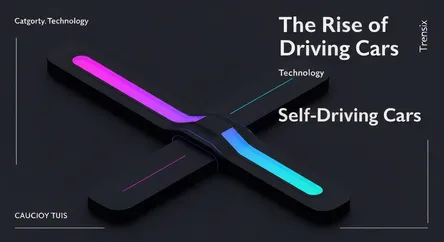Technology
The Rise of Self-Driving Cars

Discover autonomous driving, from its core technology and levels to why it's trending and how it will reshape our daily lives and transportation.
What is it?
Autonomous driving, also known as self-driving, refers to a vehicle's ability to sense its environment and navigate safely with little or no human input. The technology is categorized into six levels by SAE International, ranging from Level 0 (no automation) to Level 5 (full automation), where the vehicle can handle all driving tasks under all conditions. These systems rely on a sophisticated suite of sensors, including cameras, radar, and LiDAR, combined with powerful AI and machine learning algorithms to interpret data and make real-time decisions.
Why is it trending?
This technology is trending due to massive investments from tech giants and traditional automakers like Tesla, Waymo (Google), and Cruise (GM). Rapid advancements in artificial intelligence, processing power, and sensor technology have made previously theoretical concepts achievable. High-profile public trials, regulatory discussions, and the promise of a revolutionary shift in transportation have captured public and media attention, fueling a constant cycle of news and speculation about the future of mobility.
How does it affect people?
Autonomous driving stands to profoundly impact society. The primary promise is a dramatic increase in road safety by eliminating human error, which accounts for the vast majority of accidents. It could also enhance mobility for the elderly and people with disabilities. However, it presents significant challenges, including the potential displacement of millions of professional drivers, complex ethical dilemmas regarding accident liability, and major concerns about data privacy and cybersecurity. The transition will reshape urban planning, the auto industry, and our fundamental relationship with personal transportation.